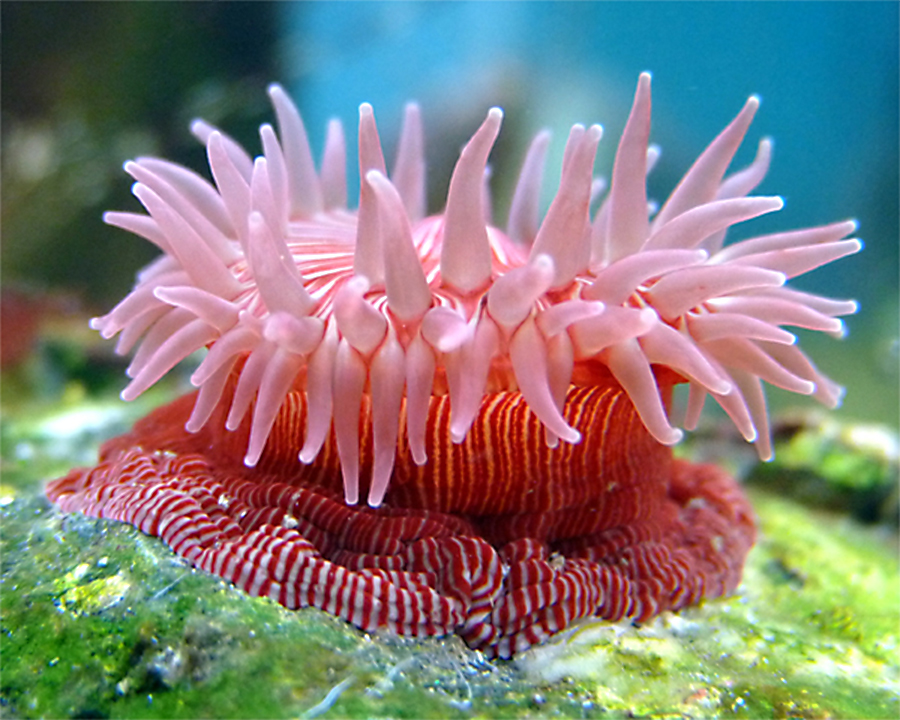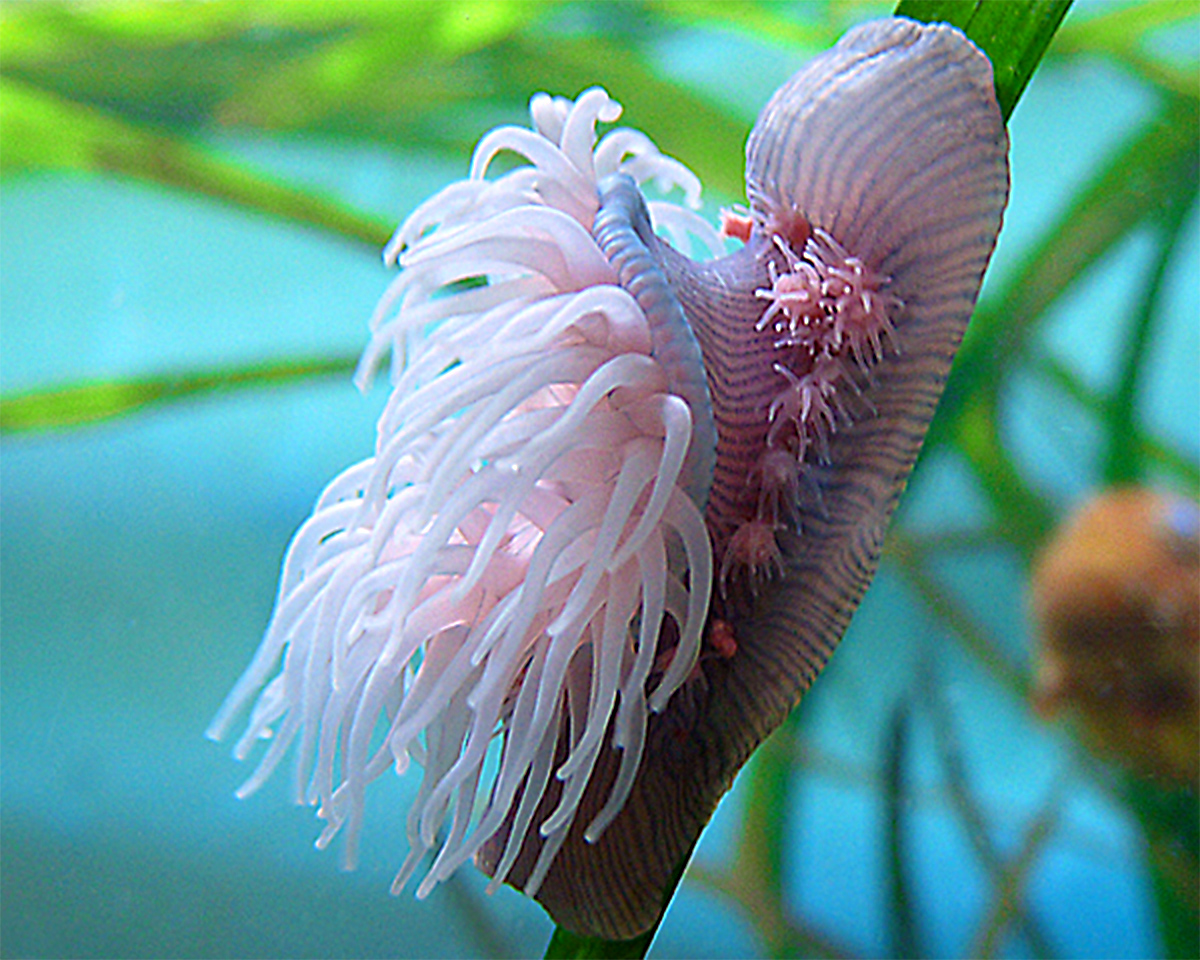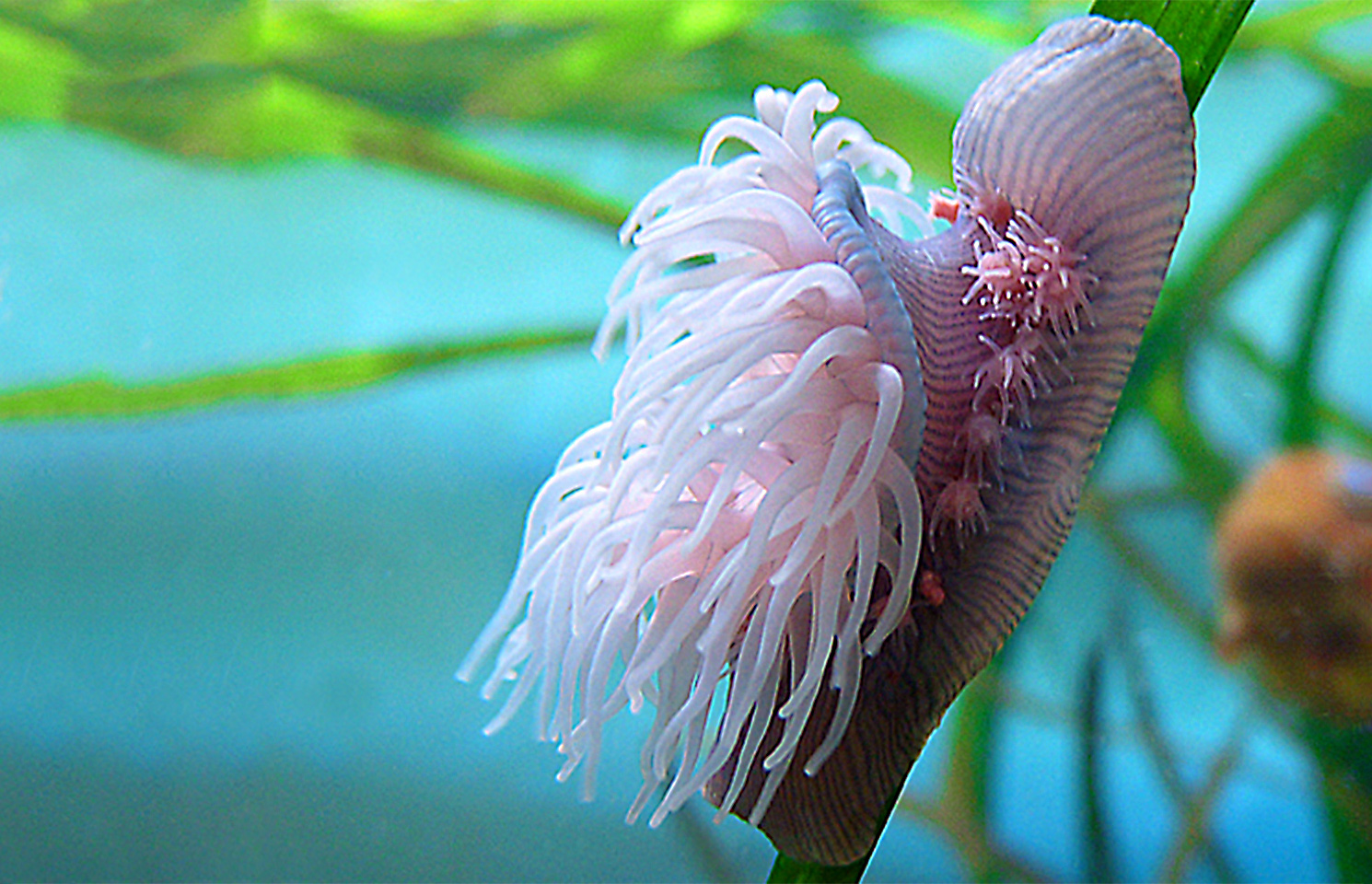Author: Maeve Leduc
Common name: Brooding Anemone, Lisbeth’s Brooding Anemone
Scientific name: Epiactis lisbethae
Size range: 2-3″ (5 to 8 cm) diameter, and 1.5″ (4cm) high.
Identifying Features: Brooding Anemone are often green, brown, red, or pink. It is very similar to the Proliferating Anemone (Epiactis prolifera) but the Brooding Anemone has white pinstripes that extend the entire length up the column, while the Proliferating Anemone has no pinstripes on its mid-column. It is larger than the Proliferating Anemone and may have hundreds of baby anemones on it’s column.
Habitat: This species is found from Bamfield, Vancouver Island, British Columbia to Coos Bay in southern Oregon, and extending down to northern California (they are less common in Oregon and California). They are often under rocks in intertidal and subtidal zones, and in areas of fast water such as surge channels. They may also be found on leaves of eelgrass as seen in the photo, although to find red or pink Brooding Anemone on eelgrass is rare. Most anemones will spend their whole lives in one place, but if desired they can hitch a ride on hermit or decorator crabs or move from one place to another on their pedal foot.

The Brooding Anemone (Epiactis lisbethae) can be identified by the pinstripes that extend up the entire length of its column (photo by D. Young)

A female Brooding Anemone with developing juveniles attached to her column (Photo by Maeve Leduc).
Food: Anemones that live on crabs is a great example of mutualism; while the anemone is protecting the crab and getting a free ride, they can also pick up bits and pieces of food from the messy eating crab. Otherwise, they mainly feed on crustaceans like shrimp and krill. They capture their prey with their stinging tentacles, paralyzing the creature with their thousands of stinging cells located in their stalk and tentacles. Then the Brooding anemone slowly moves the prey to its mouth where it devours it whole.
Predators: Not many animals will try to feed on Brooding anemones because they attach themselves to their location with their suctioned pedal foot and their tentacles and stalk are filled with thousands of stinging cells. But some nudibranches prevail; they’re not only immune to their stinging cells but they can actually take them for their own defense after digesting the anemone. To avoid being seen or easily attacked the anemone will contract at the tiniest threatening disturbance.
Life Cycle: The Brooding Anemone has separate sexes. Their eggs are fertilized in the digestive cavity, and once hatched, will move out of the mouth and mid-way down the base of the female parent (only females have the young anemones on their column). They remain there while they continue to grow and then move off to live solitary lives when they are older.
References
Kozloff, E. (1993). Seashore life of the Northern Pacific Coast: An illustrated guide to Northern California, Oregon, Washington, and British Columbia. Seattle, Washington: University of Washington Press.
Sept, J. D. (2019). The Beachcomber’s Guide to Seashore Life in the Pacific Northwest. Harbour Publishing Company Limited.

